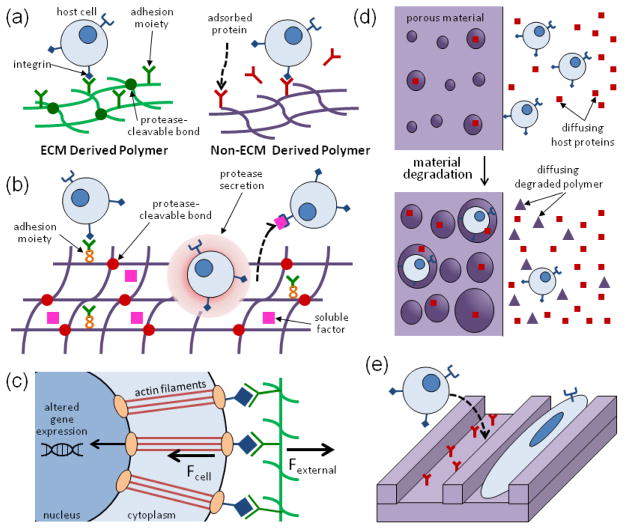FIGURE 1.
The role of chemical composition, modifications, and physical properties of biomaterials on host-scaffold interactions. (A) Cells can readily interact with and remodel ECM-derived materials, whereas they typically only indirectly interact with non-ECM derived materials via adsorbed proteins. (B) Materials can be modified with adhesion moieties, protease-cleavable cross-links, and soluble factors for driving specific interactions with host cells. (C) Materials can influence the fate and function of cells via mechanotransduction, in which cells sense physical signals from their microenvironment via adhesion receptors and through their cytoskeleton. These physical signals translate to chemical signals via altered gene expression. (D) Material porosity and degradation both dictate cell influx into the material, as well as mass transport into and out of the material. (E) Material topography can be a critical regulator of cell adhesion and alignment.

